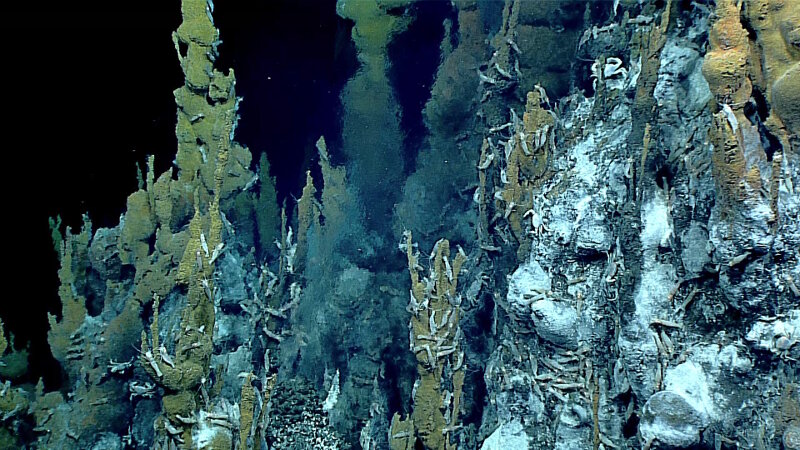
First discovered in 1977, hydrothermal vents are home to dynamic and diverse ecosystems. These ecosystems are found near spreading centers and subduction zones, where seawater percolates down through fissures in the ocean crust, is heated by magma, and reemerges as chemical-rich fluid, reaching 400°C (750°F) or more. As the superheated vent fluid rises, it is cooled by the surrounding ocean water and minerals begin to precipitate out, forming the tell-tale chimneys of hydrothermal vents that can rise more than 50 meters (164 feet) from the seafloor.
Here, in an unlit world without access to the sun’s energy, chemosynthesis provides the basis for the development of rich, diverse communities. Chemosynthetic deep-sea bacteria form the base of a food web that includes a significant variety of marine life.
The Deep-Ocean Bites Hydrothermal Vent Miniseries features “bite-sized” explanations about hydrothermal vent ecosystems and the communities they support provided by Roxanne Beinart, Ph.D. and Peter Girguis, Ph.D.
The Deep-Ocean Bites Hydrothermal Vent Miniseries is produced using previously recorded footage from expert interviews conducted during virtual NOAA Ocean Exploration Educator Professional Development events on various deep-sea topics from 2020 to present. The questions featured in each video were submitted by professional development participants and were answered live by ocean exploration experts. Additional topical footage was paired with interview transcripts after the fact to produce each of the short videos in the collection above.
Learn more about NOAA Ocean Exploration Educator Professional Development Opportunities and register for the next event today for the opportunity to ask an expert live.
Educator Opportunities
